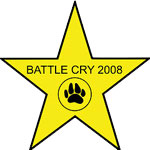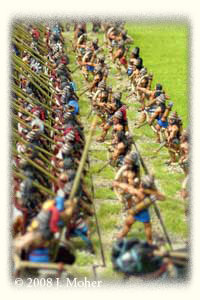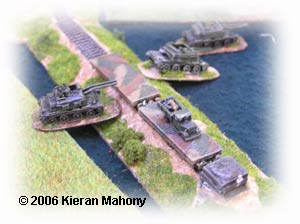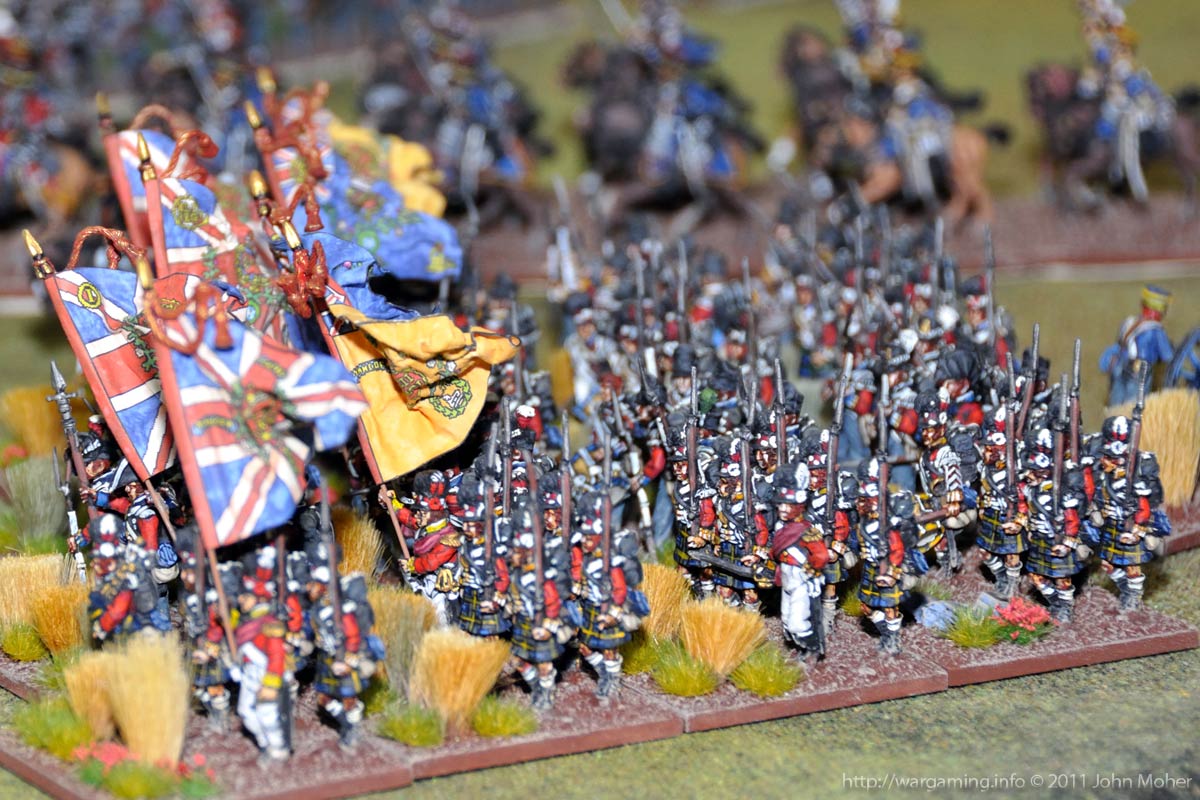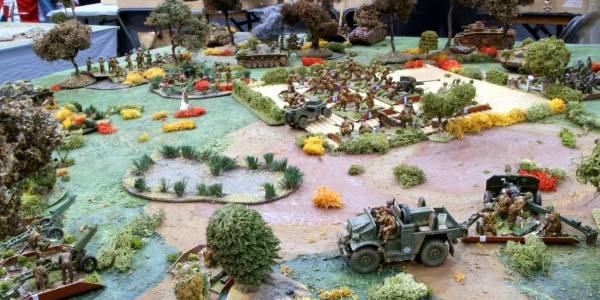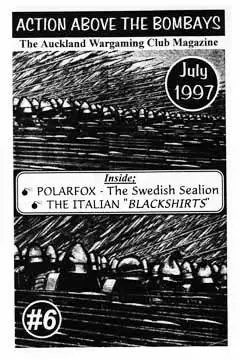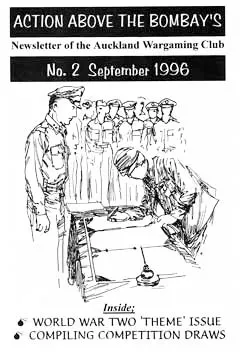Our big win in the previous round put us on 39 VPs, and top of the table (1st place) at the halfway mark, our next opponents were Brett Preston-Thomas & Lawrence Antill, who were on 36 VPs and currently in 2nd place. Caesennius decided to venture north and wander into the lands of the Germans (not to mention about 14 centuries into the future as well) – what was this obsession he had with invading Germany?! Anyway in true style he found a suitable area to set up camp, and then proceeded to relax, as was his want, and not be too hasty. However he rather unusually camped amongst some woods and vineyards, in front of a fairly open plain, so left his army with less than ideal terrain to deploy in. Continue reading “BC’08 Round 3: Medieval Germans with Swiss Allies 1478AD”
Category: Ancient & Medieval
BC’08 Round 2: Kushite Egyptians 700BC
Our Draw in the first round put us slap in the middle of the pack, 14 VPs ranking us 2nd Equal with 2 other teams (so effectively just in the top half of the table), and resulting in Philip Abela & Andrew Hunter (who were similarly ranked 2nd equal) being our afternoon opponents. (If I recall correctly) Caesennius found himself defending Rome’s Eastern environs’ from encroaching invaders this battle! And the dastardly fiends had decided to attack along a River, no less! However this soon suited Caesennius, who found the edge of a suitable plain to encamp on, forcing the Egyptians to deploy in an area thick with Marshes and an Orchard, with the River running through their deployment area, and Vineyard on their flank next to the River. Continue reading “BC’08 Round 2: Kushite Egyptians 700BC”
BC’08 Round 1: Early German Cimbri & Tigurini Gallic Allies 102BC
On the first morning we drew Ivan Truong & Andrew Fergus for our initial game. The morning actually got off to a slow start with some fluffing around, and all 4 games being played in the first round probably lost about 20-30 minutes of game time, plus took excessively long to do terrain placement and deploy. Once underway Caesennius, the Roman C-in-C, soon managed to invade Germany for whatever reasons, we presume in the South-East perhaps? Anyhow, Caesennius managed to encamp on the edge of a German plain forcing the Cimbri to pitch tents in an area of poor terrain that was mostly Marsh (3 features of such in the German deployment area), while the Roman’s deployed on the adjacent open plain – but perhaps the Germans preferred being amongst the wet boggy muck and the joke was on Caesennius?! Continue reading “BC’08 Round 1: Early German Cimbri & Tigurini Gallic Allies 102BC”
BattleCry 2008 Introduction
Well another successful BattleCry has gone by and congratulations to Karen & the AMERICA team for organising a great event, and providing the usual copious amounts of “loot” for people to take home! Also thanks to Benny (Andrew Bennetts) for organising and umpiring the New Zealand 25mm DBMM Doubles – it’s always a trade off and occasionally a thankless task. The DBMM competition was thoroughly enjoyable and went really well in my opinion. Several players were reasonably new to DBMM but picked up things pretty well from what I saw, and the overall standard of army presentation was very good to excellent, and made all the games visually appealing to the greater extent. Continue reading “BattleCry 2008 Introduction”
Wargaming in the Ancient World
The Ancient period is one of major interests, although I got into it rather later in my gaming life than many other wargamers (Ancients gaming has traditionally been a staple of the NZ Wargaming Club scene, and traditionally the majority of club members in most clubs play it). As with some of my other interests I started in 15mm (with Minoans/Early Mycenaeans – my very first army, followed by Burgundian Orddonance; then Gauls; and finally Polybian and later also Marian Romans) but have since abandoned the ‘wee scale’ and am playing exclusively in 28mm. Continue reading “Wargaming in the Ancient World”
Wargaming Scales
Figure scales are expressed two ways, either as a simple measurement, e.g. 25mm, defining how high a figure of a normal man or woman stands or as a ratio, e.g. 1/48th, defining how big a model vehicle, vessel, aircraft, or construction is in relation to the real thing. The emphasis here is on the former classification with the latter provided where possible as an approximate comparison.
Continue reading “Wargaming Scales”Brief History Of Wargaming
The following is a brief history of modern wargaming told in quotes from various wargaming books & authors:
“It was in Europe that the early forms of wargaming gradually took on a more sophisticated appearance. During the Seventeenth Century several variations on the basic game of chess were introduced. During the Eighteenth Century a number of games were introduced into France which departed from the idea of pieces and which used series of cards designed to impart basic military knowledge to the players. Also, at about this time, silver model soldiers were being used at the French Court to instruct the future king, Louis XIV, in the art of war” – David Nash (Wargames – 1974).
Continue reading “Brief History Of Wargaming”Wargaming Periods
Periods are the “Eras” or “Level of Technology” present for wargaming. Having a Greek Army of 300 BC facing a Russian Army of 1944 AD is obviously quite a mismatch and both armies need quite different sets of rules to control how they perform. Hence we have “Periods” in which armies all operated in similar ways, or with similar weapons, and can be ‘played’ using a common set of rules.
Continue reading “Wargaming Periods”To Win or Not To Win?
Or Why Ancients competitions are better for using win/draw/loss ranking systems.
Probably the 2nd loudest “discussion” at NatCon (held in Auckland, Easter 1997) was the ranking system used in the DBM competition. Some players had thought that ranking’s in the Swiss Chess draw would be determined by accumulated victory points, and were surprised to find that win/draw/loss was being used. Clearly the umpire and/or organisers stuffed up badly by not telling players exactly what variety of “Swiss Chess” was to be used, but why all the angst?? Isn’t one “Swiss Chess” system the same as any other? Not in this case!
Continue reading “To Win or Not To Win?”An Opinion on Wargame Draws
In a preceding article Ion Dowman clearly demonstrates the correct way to run a Swiss Draw tournament. One of the important factors in the Swiss system is the “Pairing” of opponents, and consequently how participants are ranked based on their results during the tournament. I would like to make some further observations and comments on this.
An issue that I personally consider significant is whether a Win is of greater value than two Draws? I believe it is, the reason being the artificial constraints imposed by the tournament environment which prevent all games from reaching their natural conclusions. This effectively means those players who are slow (whether intentionally, or unintentionally), who use the Fabian tactics Ion alluded to, or who compete without a reasonable knowledge of the rule set being used can often end up ranked in the middle of the field at the conclusion and having won perhaps only one game! While those who play to complete their games in the time allowed (and perhaps win two games in 6 rounds) are effectively penalised in comparison!
Continue reading “An Opinion on Wargame Draws”Victory Conditions in Wargames
All to often we play games with little thought about victory conditions, usually just to shoot ’em up and she’ll be right! However with a little effort and time before each game it can be given much greater depth, and consequently be more challenging and interesting to the participants. I would like to suggest some ideas for how this can be done.
Many wargamers play their games in isolation with little “purpose” behind them, the recent suggestion that a gamer’s tactics would change if their opponent got to ‘hit’ each element they lost with a heavy hammer is all too true, and it is this ‘strategic’ purpose that is lacking (we would all be very cautious if playing with the above rule)! The ideal situation to impose this ‘purpose’ is the campaign, this always puts an all new perspective to things, the opponents in a battle may not have the same objective for instance. Unfortunately 99% of the time we do not have the luxury of participating in campaigns (which is a pity) and so we need some way of creating these constraints artificially, one system I have come across is in one of my many rulebooks; “Washington’s Wars”. These rules were designed for French & Indian war action and the American Revolution, disappointingly the rule mechanics and effects on the table did not match the impressive packaging! The rules did however include one good idea about victory conditions and it is a variation of this that I will present below.
Continue reading “Victory Conditions in Wargames”Compiling Draws for Wargame Competitions
Round Robin and knockout competitions have been found wanting in wargames competitions, perhaps the most popular draw has been that known as ‘Swiss Chess”. However, recent discussions with CWS members and observation of the smallish numbers of competitors in many competitions have persuaded me that;
- The “Swiss Chess” system is not well understood;
- That “Swiss Chess” is not always the best system to use, especially where competitors do not outnumber available rounds by many.
Explanation Of The Swiss System:
The basic idea of the Swiss System is to cater for large numbers of competitors in a tournament of few rounds, allowing all to play in every round, yet retaining the knockout idea of providing a dramatic finish by matching the best two performers in the final round. This is achieved by progressively pairing players on the same or nearly the same cumulative scores. So far, so good.
Continue reading “Compiling Draws for Wargame Competitions”